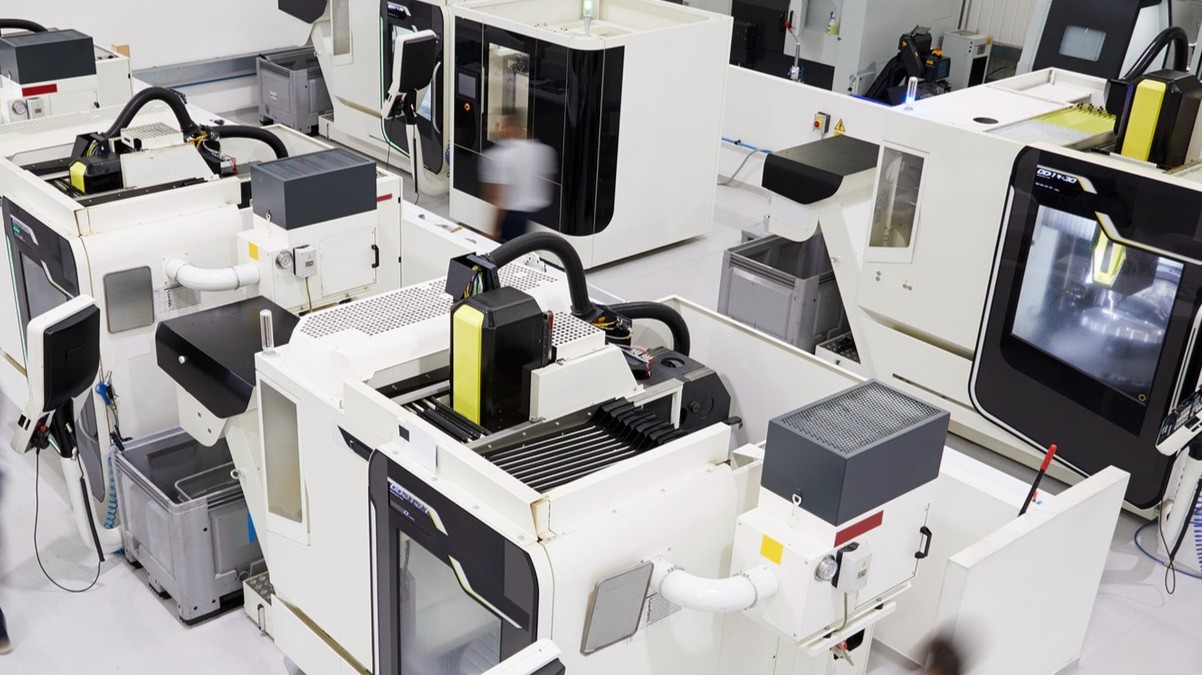The traditional manufacturing industry relied on skilled artisans manually operating lathes, meticulously shaping perfect components with hand tools. However, as times have rapidly changed, lathes have evolved from manual machines into automated equipment. Now, instead of manual carving, engineers can produce parts simply by inputting a program. The emergence of big data, AI, and the Internet of Things (IoT) has brought another wave of impact to the industry, signaling that a new manufacturing revolution is on the horizon.
Automation and Smart Machining
The most common machine tools in the manufacturing industry are lathes and milling machines. CNC, which appeared later, is a special application of modern machine tools. There are many types of these machines with a wide range of applications, and the distinction between a lathe, a milling machine, and a CNC machine is quite simple.
On a conventional lathe, the workpiece rotates while the cutting tool remains stationary. A milling machine is the opposite: the cutting tool rotates while the workpiece remains stationary. CNC, which stands for Computer Numerical Control, uses computer programs to control the entire machining process.
By simply inputting a set of instructions, it can automate production with almost no human intervention. You can find CNC applications on both lathes and milling machines, which are then referred to as CNC lathes or CNC milling machines.
CNC machining can produce parts with extremely tight tolerances. Tolerance refers to the permissible range of error for a product. In many cases, the tolerance of CNC machining is smaller than the width of a human hair, which is why it's one of the most precise technologies in the manufacturing industry today.
CNC not only reduces errors from manual measurements but is also a form of subtractive manufacturing, where material is removed from a raw block to create a part or product. It's a method that is applicable to almost all types of materials.
Data-Driven Insights and Digital Simulation
The rise of the Internet of Things (IoT) has given machines a voice. By transmitting real-time operational data—such as spindle speed, cutting force, and vibrations—they allow for continuous monitoring of their status. This data is then used to create a digital twin, a virtual model on a computer that simulates the actual machining process. Through data analysis, companies can predict when maintenance is needed, anticipate potential failures, and improve production efficiency to prevent unexpected downtime.
Challenges and Opportunities with New Materials
While lathes were traditionally used to machine metals, the variety and complexity of modern materials require upgraded technology and equipment. This is particularly true for high-specification or high-tech industries. For example, the aerospace and medical industries now require materials that are difficult to cut, such as composite materials, high-temperature alloys, and ceramics.
Green Manufacturing and Sustainability
In response to environmental concerns, the manufacturing industry is embracing sustainability. Traditional, high-volume cutting fluids are being replaced by dry cutting or minimal quantity lubrication (MQL) techniques, which reduce environmental pollution and waste disposal costs. Lathe designs are also moving toward greater energy efficiency, for example, by using high-efficiency motors and smart power management systems.
Conclusion
The four major trends—smartization, data-driven operations, material versatility, and sustainability—are now the main focus of future lathe technology. This also signifies a major shift in the role of the traditional lathe operator. Future professionals in this field will need to be skilled not only in machine operation but also in programming, data analysis, and management. They are no longer just "operators" but engineers who control an entire smart manufacturing system.













.jpg)
.jpg)